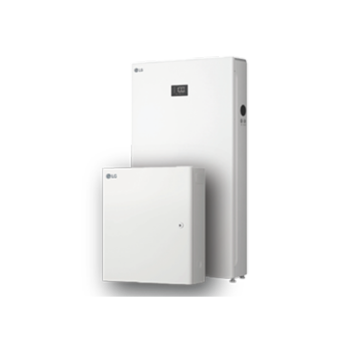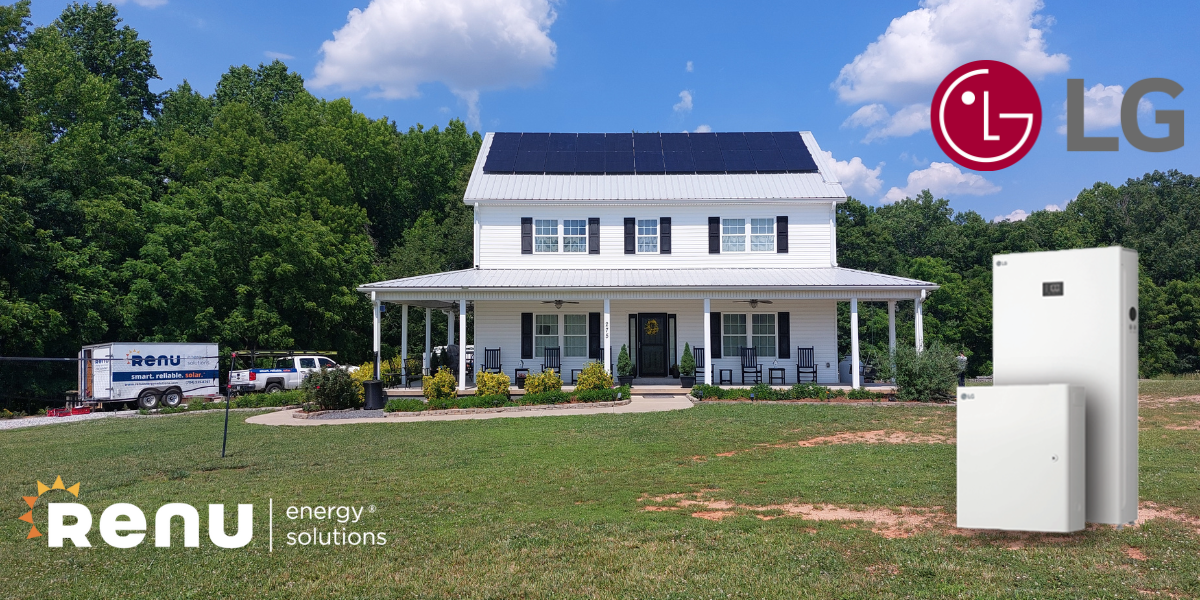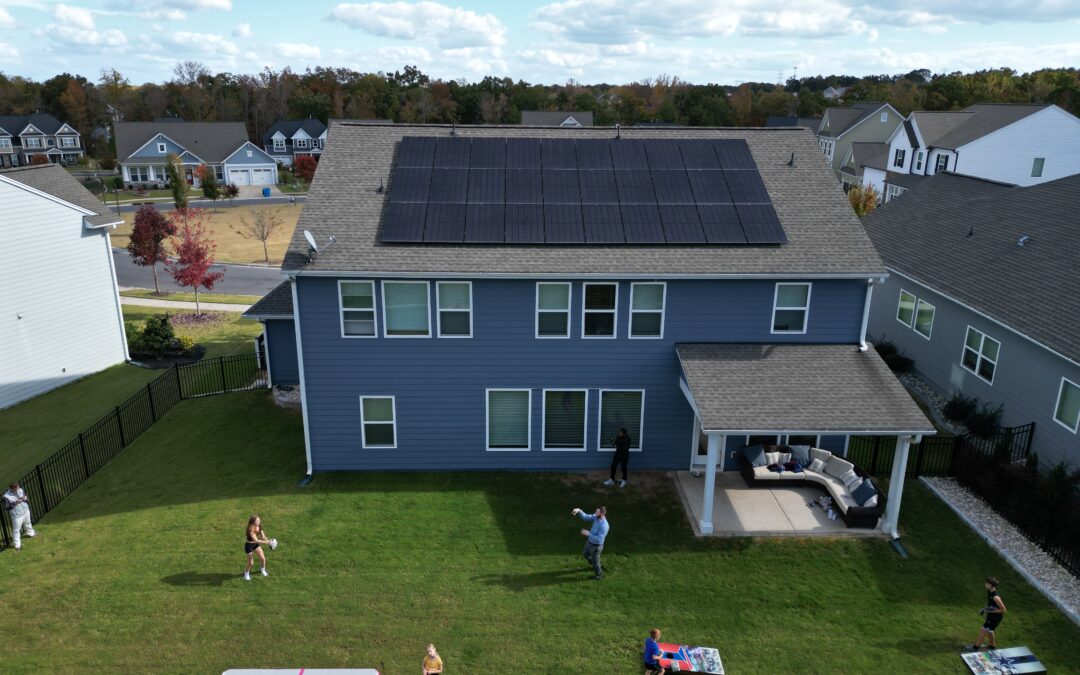by Renu Energy | Jan 19, 2024 | Renu Solar News
There is GREAT NEWS from the folks at Duke Energy – North Carolina!!
The 2024 Duke Energy PowerPair Incentive was established in response to a requirement from the North Carolina Utilities Commission (NCUC). This program was designed to test how distributed solar and battery storage helps stabilize North Carolina’s power grid while reducing the need for peak power plant capacity. The program was approved January 11, 2024, but all of North Carolina is still waiting to receive several details, including the enrollment window and more. The PowerPair Incentive offers North Carolina customers a powerful incentive to adopt solar + battery storage with cash incentives up to $9000. Renu Energy Solutions is excited to provide the following details:
This unprecedented program is available to residential customers who install new solar panels and a battery storage system. The customer must own the premises and could own or lease the installed equipment.
2024 Duke Energy PowerPair Incentive Timeline
January: The Duke Energy NC PowerPair Incentive Program is approved by the NCUC.
February: Duke Energy deadline to file tariffs outlining the application process.
March: Deadline for NCUC to provide comments.
May: PowerPair application process expects to go live!
Participants would receive monetary incentives from Duke to offset the cost of installed equipment*:
- Solar Incentive: $0.36/watt for solar panels to a maximum of 10 kW; capped at $3,600/residence
- Battery Incentive: $400/kWh for battery storage to a maximum of 13.5 kWh = up to $5400
*System’s export to the grid could not exceed 20 kW at any time.
What Else You Need to Know About this Incentive
Participants would be required to select net energy metering (NEM) as their electric tariff and be divided into two cohorts:
- Cohort A: served under the time-of-use (TOU) rates and would have complete control of the use of the energy storage device.
- Cohort B: served under the Bridge Rate and Duke Energy, or a third party, would have control over the battery storage device.
They are also required to participate in a new demand response program called Battery Control*.
*Under Battery Control, the customers’ battery could be controlled by Duke up to 18 times per winter season (Dec-Mar). Additionally up to 9 times per summer (May-Sep) and up to 9 times in the remaining months. A minimum of 30/year, maximum 36/year (referred to as Control Events**).
**A Control Event is defined as the initiation of a signal to control the battery and, within 48 hours later, a discharging of the battery by Duke. Duke will not discharge the battery below a 20% state of charge, but would reserve the right to call interruptions outside of the above parameters in the event that the utility’s continuity of service was in jeopardy.
In Conclusion – from Renu Energy Solutions
This is a fantastic opportunity for North Carolina homeowners who have Duke Energy (DEP and DEC) to save up to $9000 on their solar + battery storage system. Furthermore, there is the potential to receive additional monthly discounts. But please note: at the time of this press release, THE PROGRAM HAS NOT BEEN RELEASED!! Renu Energy Solutions prides itself in educating and advising our clients when we are certain the information is accurate and truthful. If you have been told by other solar companies that they can hold your spot, or that you qualify for the rebates right now, it’s simply NOT TRUE. We encourage you to CLICK HERE and visit the Duke Energy Rebate portal. If it’s not listed, it’s not live!
To learn more about this program and other exciting solar and battery storage options, including how Renu Energy Solutions can pay your energy bill, please fill out the form on this page or CONTACT US for your free consultation!

by Renu Energy | Nov 30, 2023 | Renu Blog
Energy Storage Solutions For The Home
Most of us understand the feeling of losing power during a rough storm or grid outage. Panic begins to set. We worry about the food we just bought at the store, the appliances we have running, the battery level on our devices, and even medical equipment that loved ones depend on. Many homeowners tend to brace themselves for potential outages that come with weather events. With energy storage solutions for the home, homeowners can be at ease knowing there is backup power ready for when they need it most.
Besides energy security, homeowners investing in energy storage solutions also have the ability to manage how their energy is used. When an energy storage unit is paired with a solar energy system, homeowners can store clean energy and decide how it gets used. With time of day energy usage as the new norm for utility rate prices, homeowners can avoid pulling from the grid during peak hours by using energy that was saved at previous times.

A Close Look At LG ESS Home 8
The LG ESS Home 8 is LG Electronics’ newest solution for energy storage and energy management. This energy storage system can be installed without the need of a solar energy system, but pairing the unit with solar allows for homeowners to save clean energy produced by solar. A capacity of 14.4 kWh gives homeowners 1-2 days of power if they are fully relying on battery back up.
Along with a peace of mind, homeowners can link their LG appliances and LG ESS Home 8 with the LG ThinQ App. With the ThinQ App, homeowners have access to their appliances and battery backup in the palm of their hands. Besides being able to check on laundry cycles and oven temperatures, off-grid mode can be enabled in the app during the case of an outage, which allows homeowners to take control of their power.

Energy Storage Installation With Renu Energy Solutions
Renu Energy Solutions has a fantastic partnership with LG. We have access to LG ESS Home 8 batteries, meaning we can order the battery so you don’t have to. LG trusts our team of licensed electricians and rooftop technicians to install battery backup whether it’s paired with a solar energy system or hooked up directly to the grid. Either way, Renu Energy Solutions is your hometown option for energy storage solutions in the Carolinas.

by Renu Energy | Oct 25, 2023 | Renu Blog
Family First
Creating a sustainable life at home starts with getting your family educated and inspired about going green. Teaching the importance of sustainable habits like recycling, shutting off lights, gardening, and composting are small steps families can take to encourage their children to live a renewable lifestyle. This family took sustainability a step further by investing in a solar energy system for their home. Even while enjoying family time outside on a beautiful sunny day, the family is producing their own renewable energy while also saving money on electricity costs.
Why Solar Works For Families
Solar energy works wonderfully for families of any size. Families use more energy than couples alone, which makes them the perfect candidates for solar. The amount of sunlight that hits the Earth’s surface in an hour and a half contains enough power to meet energy needs from across the world for an entire year. For our customers with a family of 6, solar energy helps meet their needs with no issues!
With the sun powering this family’s home, they are able to save over $100 each month by avoiding expensive electricity costs. Before this family paid an average of $160 a month on power. Now they spend an average of just $40 a month. Our inhouse team of energy consultants, operations team, and installation teams were able to help this family design and build a system that nearly offsets their need to pull electricity from the utility grid.
Saving For What Matters Most
When a family like this saves on solar, they are saving for the important things in life. Whether that be football, MMA, or gymnastics this family is able to provide experiences for their children that build a strong work ethic, character, and memories to last a lifetime. Along with extracurricular activities, this family can save for emergencies and unexpected life changes. Solar energy for the home provides families with a way to live more sustainably for the environment and their loved ones.

by Renu Energy | Oct 25, 2023 | Renu Blog
The Charlotte Auto Show: Where Automotive Excellence Meets Innovation
Each year, the Charlotte Auto Show takes over the Convention Center in Uptown to showcase a variety of vehicles from top brands in the automotive industry. From November 16-19, ticket holders get a chance to see over 170 vehicles from automakers such as Toyota, Ford, Porsche, Ram, Maserati, Chevorlet, and more! Guests are able to make purchases on vehicles, win designer handbags and heels while raising money for pediatric cancer, and play games for children of all ages. Along with vehicle exhibits, a new tech and sustainability zone will be available for guests to learn more about sustainability for vehicles and homes.
Renu and Sun Services: Pioneering Sustainable Energy Solutions
This year, Renu Energy Solutions and Sun Service Specialists are proud to support the Charlotte Auto Show’s New Tech and Sustainability Zone. Since both companies focus on providing solar energy, energy products, and services that are sustainable, Renu and Sun Service will demonstrate how solar energy can power your home and electric vehicle. Our displays will showcase some electric vehicle chargers for the home, solar panels, and energy storage units. Along with these components, members of the Renu Crew and Sun Service Squad will be there to answer any questions regarding solar, energy storage, and electric vehicle charging.
We aim to educate exhibitors on the importance of utilizing solar energy to charge electric vehicles; eliminating the need of fossil fuels to power homes and vehicles. Through graphics and product demonstration, exhibitors will learn how solar energy works step by step.

by Renu Energy | Oct 19, 2023 | Renu Blog
What Are Solar Tax Credits?
When customers decide to invest in solar for their home, one of the perks they receive is the solar tax credit. Ever since The Inflation Reduction Act of 2022 passed, customers get a 30% Federal tax credit for their system, installation costs, and energy storage units that are paired with the solar system. South Carolina customers receive an additional 25% State tax credit, making the total tax credit for their system 55%.
For example, if a customer receives a tax credit for $5,000 for their system, their Federal income taxes are reduced by $5,000. Let’s say this customer owes the IRS $2,500. The solar tax credit would be used dollar for dollar to bring the balance the customer owes to $0, and then the customer would carry forward the remaining $2,500 to the following year. Customers have 10 years to utilize the full amount.
Criteria For Claiming Tax Credits
Customers can claim solar tax credits by meeting the following criteria:
–They were the ones who used the system for the first time. (Excludes people moving into a house that has a system already installed)
–They are the homeowner where the solar system is installed
–The solar system was installed after January 1, 2017
Speak with a tax professional to ensure you meet all of the criteria to claim the solar tax credit.






